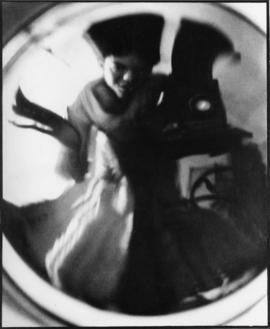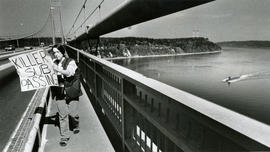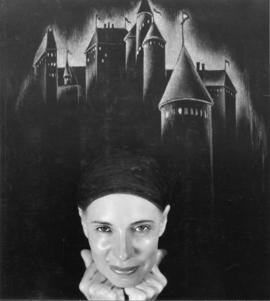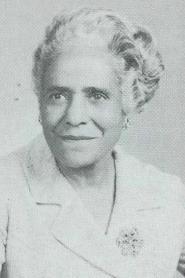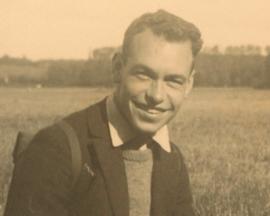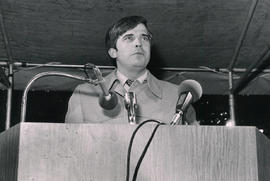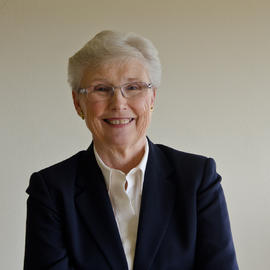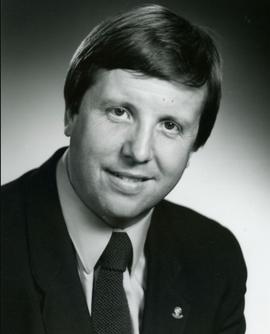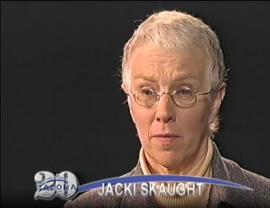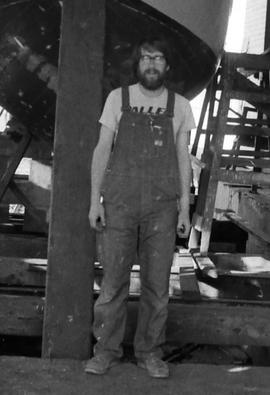Erna Spannagel Tilley (1887-1982) was a supporter of the arts in Tacoma. She was born in South Dakota to a German immigrant father and Wisconsin-born mother. She and her four siblings moved with their parents to Spokane, Washington where she attended high school. After graduating from the University of Washington, she married Homer H Tilley (1884-1953) in 1911. He was employed by Metropolitan Insurance Company and transferred to Tacoma by 1917.
Their social circle included artists, writers, poets, and dramatists throughout Puget Sound. In later life, Erna Tilley profiled several of these artists in her books, ”A Gateway to Friendship” (1970) and “Remembrances of Five Notables” (1971). She helped organize the Tacoma branch of the Drama League of America in 1918, and was involved throughout its existence and transformation into the Tacoma Little Theatre. An active board member for 28 years, she chronicled it in “The History of the Tacoma Little Theatre” (1965).
In 1929 she was named Tacoma’s official hostess, authorized by the city council to run the Welcome Wagon, a job she held for at least ten years. She helped orient new residents to city resources and distributed sample goods from local businesses. In 1935, she served on the first board of the Tacoma Art Association which developed into the Tacoma Art Museum. She documented its beginnings in “Resume: Early History of Tacoma Art Association”. Later she was also a founding member of Allied Arts of Tacoma, receiving its Allied Arts Civic Award in 1969.
She worked as a real estate salesperson and was concerned about the course of Tacoma’s urban development. She was a board member of the Tacoma Municipal League and received their Distinguished Citizen Award in 1977. She died July 6, 1982 at the age of 94.
The Tilleys had two daughters; the first, Julia, was born in 1913. She lived with her parents until sometime after 1960 when she was institutionalized. She died in a nursing home in 1980.
Margaret Tilley was their second child, born in 1916. A 1933 graduate of Stadium High School, she attended the College of Puget Sound for two years, then transferred and graduated from the University of Washington in 1937. Her weekly letters to her mother began when she was employed at the Custodial School in Medical Lake, Washington for a year. She returned to Tacoma and served as an editor of the Tacoma News Tribune’s society page for two years. In 1941 she moved to San Francisco and resumed writing letters. By 1944 her job with the American Red Cross entailed service on troop transport trains, assisting wounded servicemen from the Pacific theater on their return to points east. She was attached to Army groups in China and Japan in WWII. She was on General Douglas MacArthur’s staff of the Joint U.S. Military Advisory Group to the Republic of China when it was evacuated to Japan in 1949. She joined the Foreign Service in 1950 and served in Vienna, Damascus, London, Montevideo, Pretoria, Milan, and Bangkok. She maintained a correspondence with her mother during her years abroad. She retired in November 1972 and died in Tacoma on January 3, 1974, age 57.
